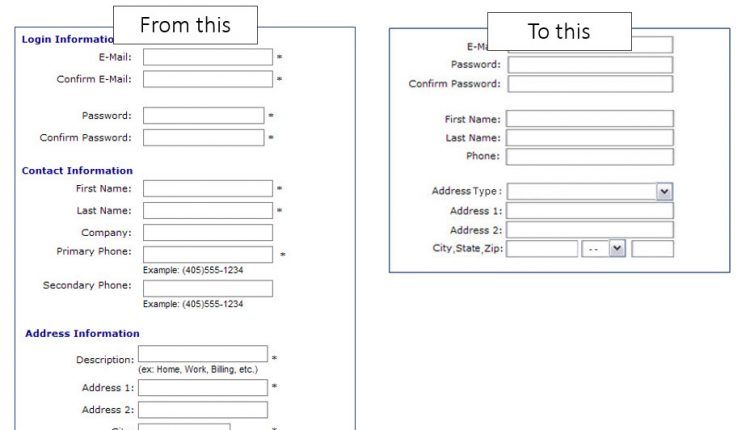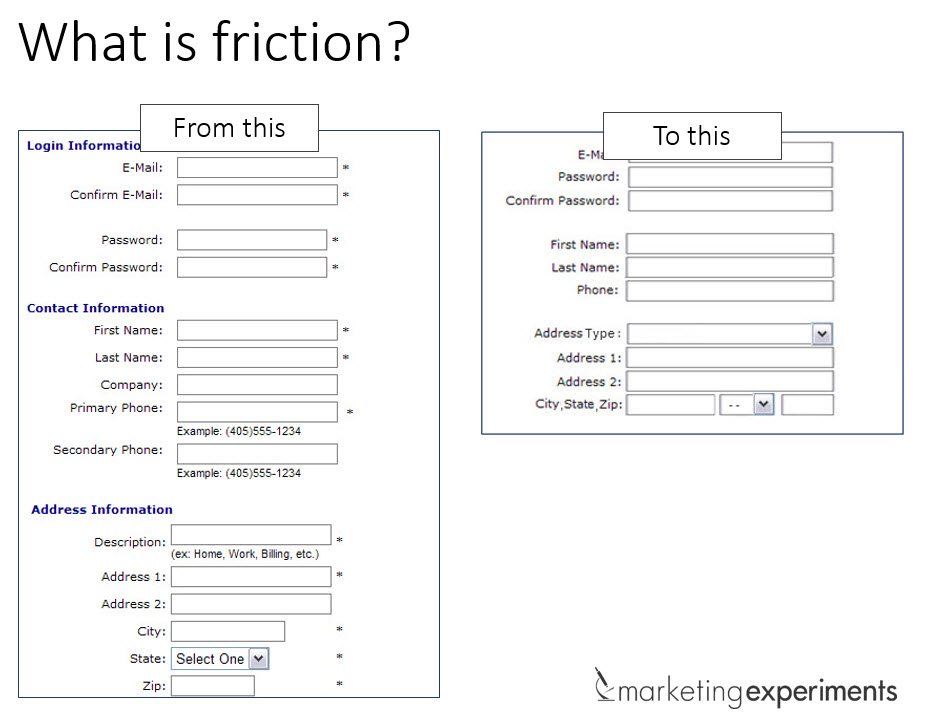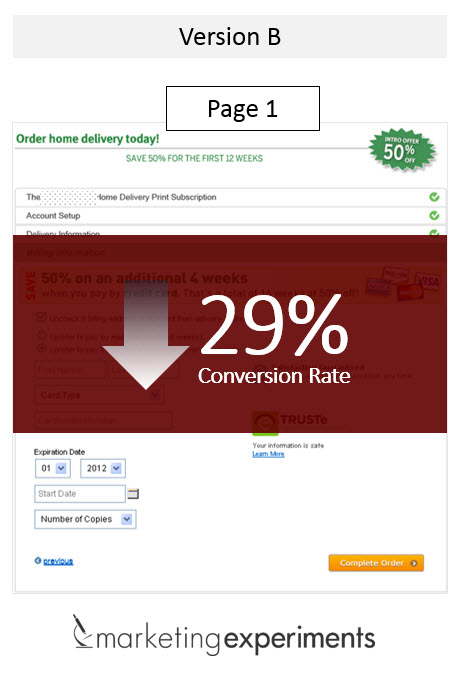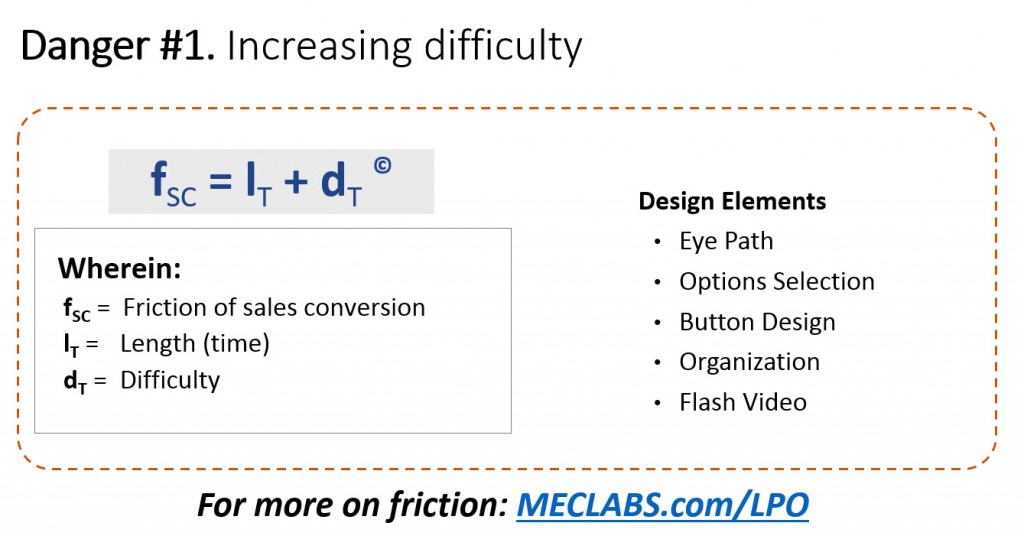I’m sure most of you have heard the old proverb: The road to ruin is paved with the best of intentions.
In fact, if you have a different version of it, feel free to share it in the comments below.
The proverb is a great example of the subtle dangers in optimizing a process with no perspective on how the big picture is potentially impacted by those changes.
In this MarketingExperiments Blog post, I wanted to take a close look at a checkout process experiment and what we can all learn from this company when it comes to identifying the subtle dangers in optimization that often accompany intention.
Friction is a psychological reservation toward your desired outcome
Before we get started, I want to first explain what friction is. MarketingExperiments defines friction as “a psychological resistance to a given element in a sales process.”
So when you optimize to reduce friction, you’re really optimizing to reduce the reasons a person has for not taking your desired action.
Also, friction exists everywhere, but the slide above does a really nice job of providing a simple illustration of reducing fiction in a form.
You may make a process shorter …
Friction is not always so easy to identify and eliminate. Take a look at these two versions of a checkout process for example.
Version A is a three-step cart checkout process that is a little lengthy.
The MECLABS research team hypothesized that by shortening the steps into a one-page accordion checkout process (Version B), they could reduce length-oriented friction.
… but it’s no guarantee that it’s easier for a customer
The accordion-style checkout in Version B decreased conversion 29%. Ouch!
But there’s an even more important question here: Why did an increasingly popular checkout process get trounced by the process that looks more burdensome?
What you need to understand
One plausible explanation from the MECLABS research team is that while they may have reduced the length of the process, they inadvertently increased the perceived difficulty of the checkout.
As a result, the conversion rate dropped, which leads to my point about friction.
Although reducing friction is considered one of the more effective ways to improve the performance of a webpage, you have to be cautious of undermining the conversation with your customers.
When you undermine conversation, you also risk undermining the building of trust with customers.
You may also like
Radio Buttons vs. Dropdowns [Watch the full Web clinic replay to learn more about this experiment]
Landing Page Optimization: Radio buttons vs. dropdowns [More from the blogs]
LPO: How many columns should you use on a landing page? [More from the blogs]
Radical Redesigns: Lifts vs. building customer theory [More from the blogs]







